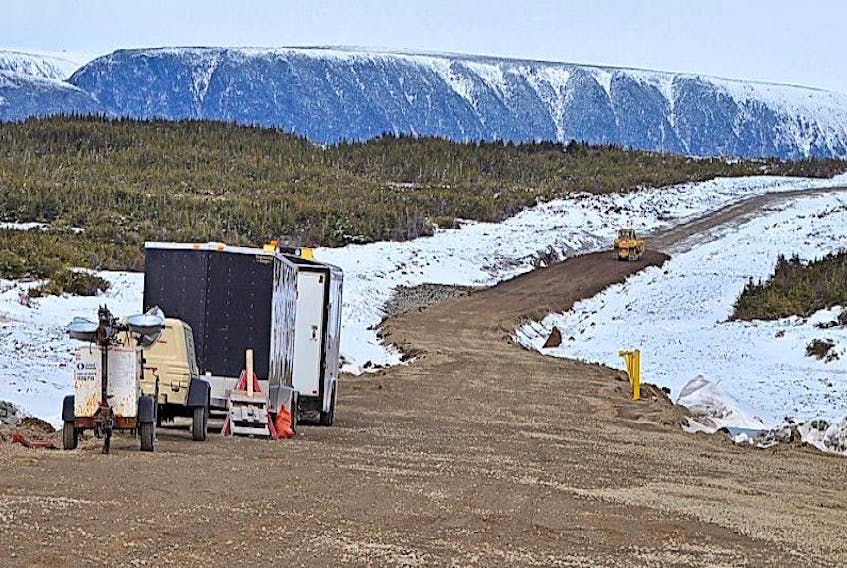The unforgiving reality is that the province of Newfoundland and Labrador and its taxpayers are married to the Muskrat Falls hydroelectric project.
Well over budget and schedule, that reality includes an unclear picture of the project’s economic value to the province and the people once completed.
Despite a popular — albeit misguided — opinion that the province should cut bait, the cost of shutting down and mothballing the project far outweigh the cost of continuing down the development road towards completion in 2019.

“But we’re still faced with the question of, once it’s finished, are we going to be able to operate it? Are we going to be able to meet the payments?” posits economist David Vardy, a longtime critic of the project.
“It’s always been assumed that if you raise the price, that the ratepayers will pay more money, so nobody asked the fundamental question, which was Economics 100: what about demand elasticity?”
Demand elasticity, simply put, is used to measure the change in demand for a good or service in relation to price movements of that good or service. If the price of apples goes up, people will buy more oranges.
By 2022, power rates for island residents are expected to double to 23.3 cents per kilowatt hour — higher if not for a second federal loan guarantee that’s taking 1.5 cents off — and Vardy expects that will have a dramatic impact and spur customer to seek ways to reduce their consumption.
“The demand for electricity is going to vanish, there won’t be any need for Muskrat Falls power, nor will there be any need for Holyrood power.
“That kind of an increase in rates will have a dramatic impact.”
Any notions of dividends, Vardy says, are delusional.
“The whole idea of dividends out of Muskrat Falls was a delusion from the beginning, and even more now that you’ve got this doubling of prices.”
Read the entire series here
Siobhan Coady, the province’s minister of Natural Resources, says the province is also concerned with the rate increase and its effect on citizens and businesses, which is why its rate management plan includes directing Nalcor to find $210 million to lower rates starting in 2020-21, with that amount growing to $245 million in subsequent fiscal years.

Coady says transmission line completion this year will result in reduced usage of the Holyrood plant, and being able to use recall power — power from the Upper Churchill that the province might have otherwise exported — could lead to savings that can also be put towards rate mitigation measures to keep rates competitive with the rest of Atlantic Canada.
“(We’re) looking at longer-term energy sales and maximizing that opportunity so that we’re capturing a better rate and using some of that export power to rate manage in the province,” she says.
“We have to get competitive.”
Vardy, for his part, says export markets don’t exist, at least not at the level that produces a return to offset the costs of operating and maintaining Muskrat Falls.
“We’re exporting 1.6 billion kilowatts per hour of power to markets in New England, but we’re using Quebec’s transmission lines…. getting 2.1 cents per kilowatt hour as a gross price and we’ve got to deduct the wheeling charge, so we’re getting about a cent per kilowatt hour.
“If you get one cent per kilowatt hour for all of the power from Muskrat Falls, let’s say it’s 4.9 billion kilowatt hours, that works out to $49 million.”
Progressive Conservative party Leader Paul Davis accuses the government of playing politics when it comes to costs and doubling rates, specifically omitting mitigating factors around the value of both federal loan guarantees and the value of excess sales.
“One on side they’ve talked about excess sales in their revenue projects, but they don’t consider that when they’re talking about rate mitigation, there’s also a rate of return from the Crown corporation back to the province; they don’t include that in their discussions as well,” Davis says.

“But the government has options of how to mitigate the rates and monthly costs to Newfoundlander and Labradorians, and I think they’re playing a little bit of politics here, they’re trying to paint the picture of doom and gloom and worst-case scenario when they’re going to make moves to improve on worst scenario and look like they saved the province.”
Davis counts himself among the camp of believers that the long-term benefits of Muskrat Falls will extend to future generations, and says the lower Churchill River developments have the potential to stand alongside projects like the Hoover Dam.
“As long as the rain falls, the snow melts and water rolls down the river, there’s an opportunity to generate clean power that can be transmitted for long distances, now, with less loss than ever before.
“I think the Churchill River will be that; it’s already been producing reliable power since the early 1970s and we all hope and believe that Muskrat Falls will be the same way, no different than the Hoover Dam.”
Coady, meanwhile, defends the government’s handling of the file since taking office in 2015, but insists she would never defend the merits of the project.
“We inherited the project, we’re working towards completing the project and putting it on track so we’re not further slipping. There’s been no real slippage since we’ve taken on administration.”
Twitter: kennoliver79









